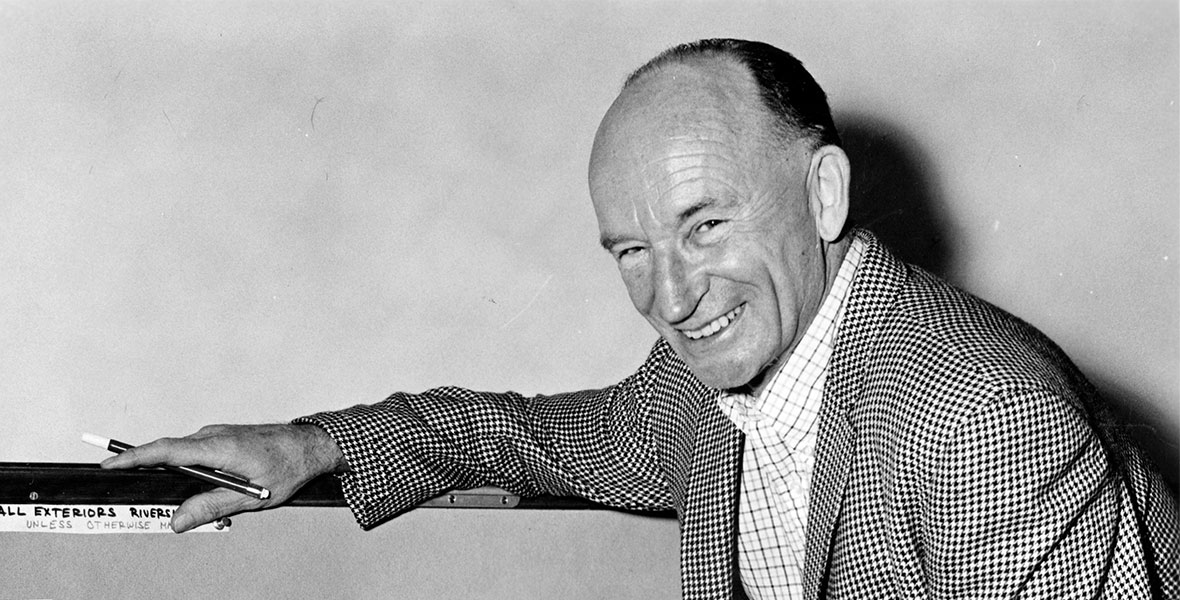Whether it was flying Volkswagens, levitating nannies, leprechauns, or flubber he conjured, Director Robert “Bob” Stevenson’s unusual knack for blending fantasy with credibility made anything seem possible in Disney live-action motion pictures. During the 1960s, the unpretentious craftsman directed nearly all of Disney’s successful films, including the Academy Award®-winning Mary Poppins in 1964.
Born the youngest of 12, in Buxton, England, on March 31, 1905, Bob studied science at Cambridge University, excelling in aerodynamics. During his graduate studies in psychology, a research assignment involving filmgoers inspired him to pursue a motion picture career.
By 1934, he had directed and written the screenplay for his first motion picture, Nine Days a Queen. This was followed by Falling for You, King Solomon’s Mines, and more. In 1939 he moved to Hollywood, where he directed, among others, Tom Brown’s School Days featuring Cedric Hardwicke, Back Street starring Margaret Sullivan, and Jane Eyre with Orson Welles.
During World War II, Hollywood producer Frank Capra recruited Bob to co-produce documentaries for the United States War Department, including a film covering the liberation of Rome. After the War, he resumed his career, directing the Dick Powell thriller To The Ends of the Earth, followed by I Married a Communist, Walk Softly Stranger, and The Las Vegas Story. In 1952, he directed about 100 television productions and penned scripts for Gunsmoke, Alfred Hitchcock Presents, and General Electric Theater.
Walt Disney tapped Bob in 1957 to direct the historical tale Johnny Tremain. He would go on to direct Old Yeller, Darby O’Gill and the Little People, Kidnapped, The Absent-Minded Professor, In Search of the Castaways, The Misadventures of Merlin Jones, The Love Bug, and many more.
The believable fantasy elements found in many of his motion pictures have been a source of inspiration for other filmmakers, as well. Stanley Kubrick was said to have seen Mary Poppins three times while prepping 2001: A Space Odyssey.
Bob once explained the secret of his success: “When I’m directing a picture, what I have in mind is a happy audience, enjoying it in a movie house.”
Former Disney producer and fellow Legend Bill Walsh credited the director’s keen sense of vision and attention to detail. He once said, “With Bob, you were always sure when the film finished that you had everything you needed; he covered it from all angles, so it was a cinch to cut together.”
By 1977, Variety called Bob “the most commercially successful director in the history of films,” while 19 of his features made a list of all-time top grossing movies published by American Film Magazine in 1978.
Despite his successes, he often remarked that filmmaking is “a team-effort—no one man can make a film.”
Robert Stevenson passed away on September 4, 1986 in Santa Barbara, California.



